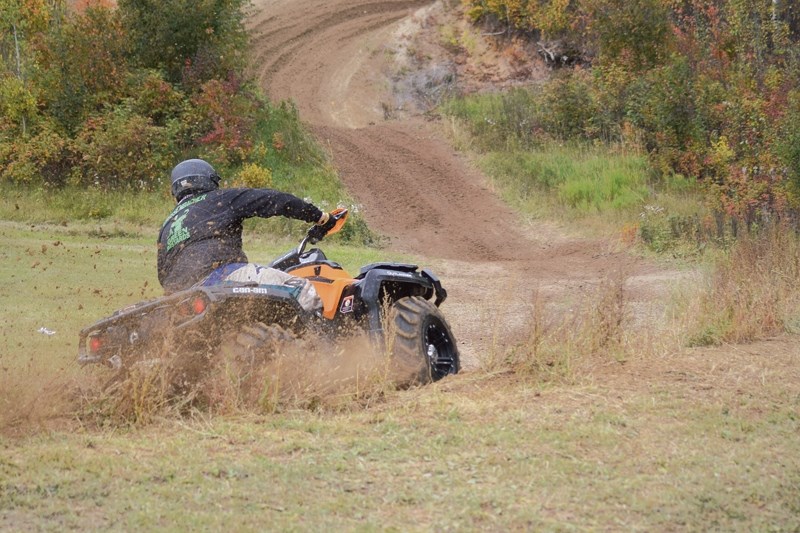It was a busy weekend for rodeo goers.
On the weekend of Sept. 18, at the same time hundreds of people were watching the best rodeo athletes compete in the Wildrose Rodeo Association Finals daily at the Barrhead Agrena, another group were competing in a rodeo of their own.
Each event had more than their share of dirt and horses.
Mike Battenfelder, organizer of the biannual quad rodeo at the Batt Traps Recreational Area near Camp Creek, said although both rodeos were on the same weekend, no one could confuse the two events.
“I don’t think the people at the Wildrose Rodeo are interested in the kind of horse power we have out here this weekend,” he said.
For the last 14 years, the Battenfelder family has hosted an annual ATV rodeo.
“My father started it in 2001, because ATV riders in the area really didn’t have a place they could go and take part in a friendly competition,” he said, adding that when his father passed away, he continued the tradition.
Every year the Battenfelder family hosts two ATV rodeos, one in the spring and one in the fall.
“The one in the spring as a memorial for him, and this one here, is more of just a fun event,” he said.
The rodeo traditionally has three different team events, the drag and pull, the chariot race and the cross-country race.
In the drag and pull competition, each team of four riders are required to connect their quads to a bucket with ropes connecting to one common drag bar. The teams must then pull the bucket through an obstacle course.
In the chariot race one ATV is attached to an empty chariot and leads the other three quads around the course, which is marked, by large metal oil barrels. The remaining three quads, called outriders, have to pick up the mail (a small board with a rope attached), to complete the course. After they do that they must then follow the chariot once again through the course, and return the mail to the barrel. After returning the mail, the three outriders then help the chariot back into its own individual corral before racing, on foot, and touching the fence.
In the cross-country, racers compete in a timed event over a large course that includes a number of different types of terrain.
“The racers start by going through a mud pit before they go onto into the bush, with over two kilometres of trail with 57 different corners before going through another mud pit and the finish line,” he said.
Battenfelder said this year’s fall event had 12 teams of four-people taking part, including three women’s teams, adding that he was happy with the attendance.
“The one in the spring is usually a little better attended,” he said, “In the fall people are busy on their farms with harvest and the slow down in the oil patch may have had a bit of an affect, but we are pretty close to our usual numbers.”



